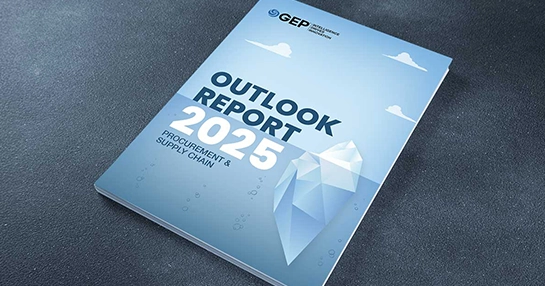
Why Procurement Leaders Are Betting on Agentic AI for Optimizing Supplier Networks
- Agentic AI transforms supplier networks from reactive to adaptive, delivering resilience in real time.
- The future of procurement is not about replacing people but empowering them to focus on strategy while AI manages execution.
- Leaders who pilot agentic AI today will be the ones setting the pace for tomorrow’s supply chain performance.
October 06, 2025 | Procurement Strategy 4 minutes read
When you’ve been in supply chain and procurement long enough, you start to see the same cycles repeat themselves. We centralize, then decentralize. We globalize, then pivot back to regional resilience. We digitize, then realize digitization without intelligence is just prettier paperwork. But right now, there’s a shift underway that feels genuinely different: the rise of agentic AI in supplier network optimization.
And no, this isn’t another buzzwordy detour. Agentic AI is what happens when artificial intelligence stops being just predictive and starts being proactive, taking initiative, negotiating trade-offs, and orchestrating actions across a network without constant human prompting. For procurement and supply chain leaders, that’s a game-changer.
Why Supplier Network Optimization Needs a Rethink
Supply networks are getting harder to manage, not easier. We’re balancing:
- Cost vs. resilience (cheap vs. safe)
- Global reach vs. local compliance
- ESG commitments vs. speed and efficiency
- Customer demand variability vs. supplier reliability
Traditional optimization models help, but they’re brittle. They assume you can lock down variables, run scenarios, and pick the “best” option. Anyone who’s lived through port shutdowns, semiconductor shortages, or a raw material embargo knows that models collapse the moment reality intrudes.
This is where agentic AI brings a new dimension: adaptability in real time.
What Makes Agentic AI Different?
Think of traditional AI like a super-smart analyst. It chews through data, spots patterns, and tells you what might happen. Agentic AI, by contrast, acts more like a seasoned category manager who doesn’t just hand you a dashboard but actually makes calls, lines up alternates, and escalates issues when they matter.
Concretely, agentic AI can:
- Continuously monitor thousands of signals across your supplier base, from logistics feeds and commodity markets to ESG disclosures and weather data.
- Run simulations dynamically, adjusting assumptions as new information comes in.
- Take initiative, not just flagging a disruption but automatically rebalancing supplier allocations, rerouting logistics, or even triggering risk-mitigating contracts.
- Learn preferences over time, respecting your organization’s trade-off logic (for example, always prioritize continuity of supply for critical SKUs even if it costs more in the short run).
The Human-AI Division of Labor
This doesn’t mean procurement leaders or supply chain managers are out of the loop. Far from it. The real opportunity is in redefining the division of labor:
- AI as operator: Handling the high-frequency, low-value work such as constant monitoring and routine adjustments.
- Humans as strategists: Focusing on supplier relationships, long-term category strategy, and navigating gray areas that machines can’t parse like reputational risk or nuanced supplier negotiations.
That balance allows organizations to move faster and smarter without burning out their teams.
Ready to leverage agentic AI in procurement?
Get The Agentic AI Playbook to see how leaders are moving from automation to autonomy
What This Looks Like in Practice
Imagine you’re sourcing critical components from three Tier 1 suppliers across Asia. Agentic AI:
- Spots a typhoon forming in the South China Sea and simulates probable port closures.
- Reallocates near-term orders to your Korean and Taiwanese suppliers before ships are stuck offshore.
- Triggers a temporary agreement with a backup supplier in Mexico, keeping lead times stable for North American customers.
- Notifies you after those adjustments are in motion, so you’re aware and can make higher-level decisions like how to communicate to key customers or whether to hedge costs.
Instead of waking up to a crisis briefing, you wake up to a mitigation plan already in action.
The Procurement Leader’s Playbook for Agentic AI
If you’re thinking about where to start, here are a few pragmatic steps:
1. Inventory your data streams.
Agentic AI thrives on signals. ERP, TMS, supplier scorecards, commodity indices, shipping trackers, financial health checks, and even weather alerts are all inputs that shape better decisions. Start with mapping what you already capture versus what you should capture, and close those gaps.
2. Define your decision guardrails.
Agentic AI works best when it knows where autonomy is acceptable and where a human must step in. For instance, you might allow AI to rebalance allocations under a five percent cost variance, but anything above that triggers a human review. Or you could set rules that AI can adjust logistics routing freely but not sign new supplier agreements without approval. Clarity here prevents both overreach and underuse.
3. Pilot in high-volatility categories.
Not all categories are equal. Electronics, energy, logistics, or any supply base with a history of frequent disruptions is a strong candidate for early pilots. This builds confidence by showing visible value quickly and helps refine the governance model before expanding to broader categories.
4. Integrate supplier collaboration.
Agentic AI should not operate in isolation. A critical part of supplier optimization is collaboration. Build channels where AI-triggered actions, such as reallocations or volume shifts, are communicated clearly to suppliers. That way, partners understand not only what changed but why it changed, reinforcing trust.
5. Invest in governance and explainability.
No procurement leader will hand over critical supply decisions to a black box. Choose systems that allow auditability of decisions and visibility into the “why” behind each action. That’s essential for internal alignment and regulatory or ESG reporting.
6. Develop organizational readiness.
Even the best AI fails if teams are not prepared to work with it. Training procurement and supply chain staff to treat AI as a collaborator rather than a competitor is vital. Build comfort with interpreting AI recommendations and integrating them into strategic workflows.
Discover More: Supplier Network Collaboration Software
Why Now?
Agentic AI isn’t theoretical anymore. The compute power, real-time data infrastructure, and advanced multi-agent systems exist today. More importantly, the supply chain profession has never needed adaptive, autonomous support more. Disruptions aren’t one-off events; they’re the new baseline.
For leaders in procurement and supply chain, embracing agentic AI isn’t about chasing the next shiny object. It’s about finally having a system that’s as dynamic, complex, and responsive as the networks they’re tasked with managing.
And that’s not just evolution. It’s survival.



